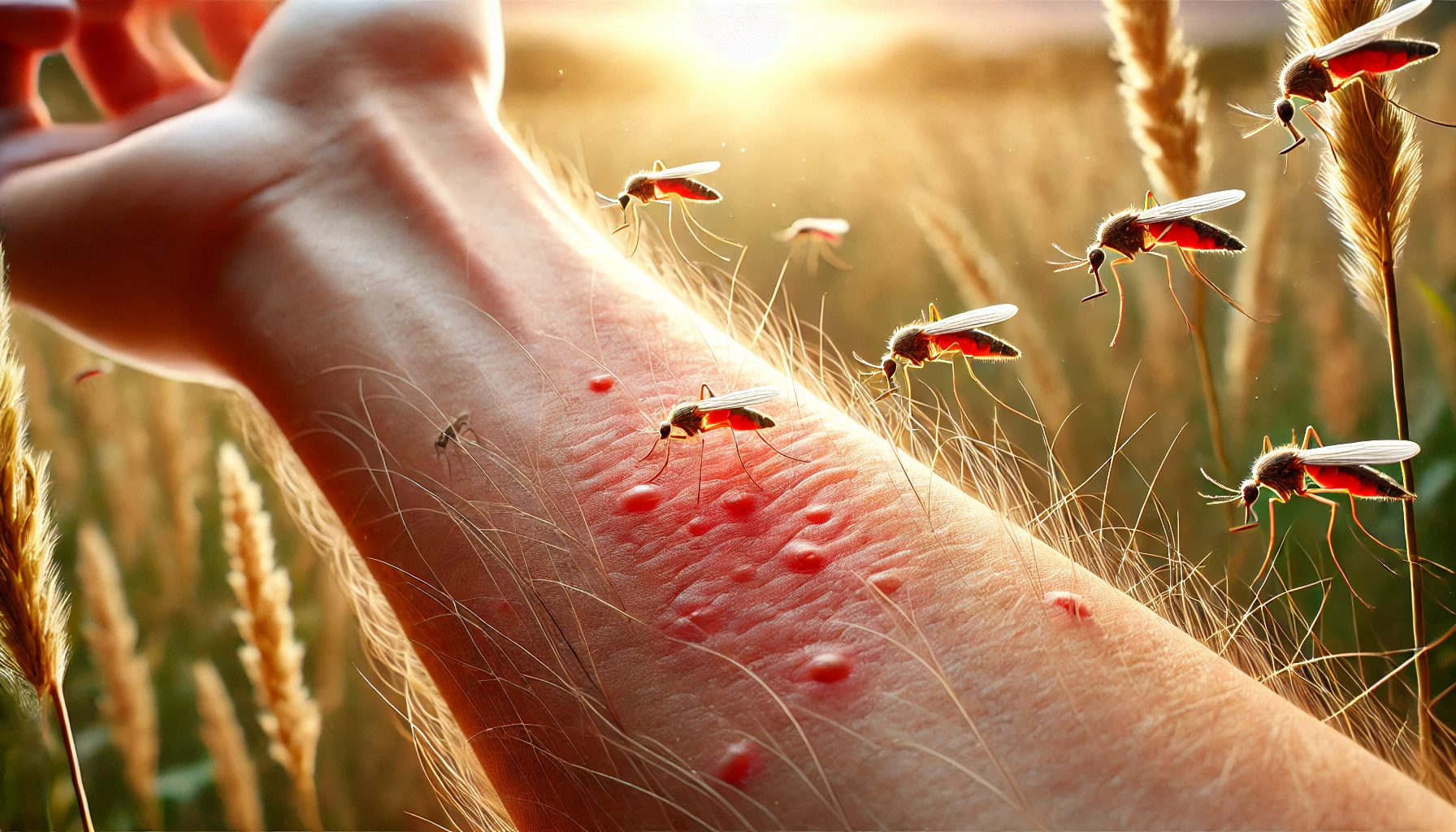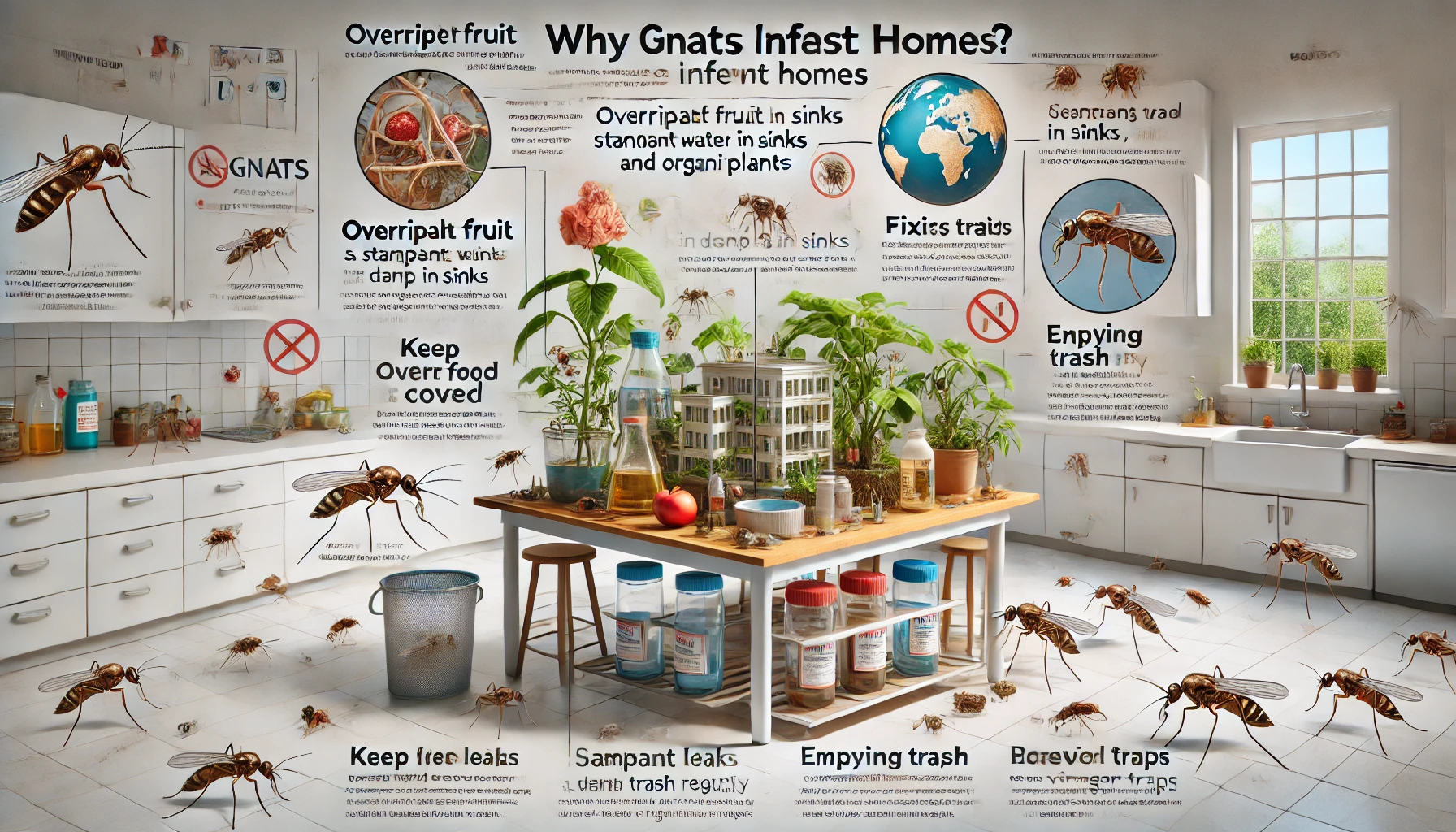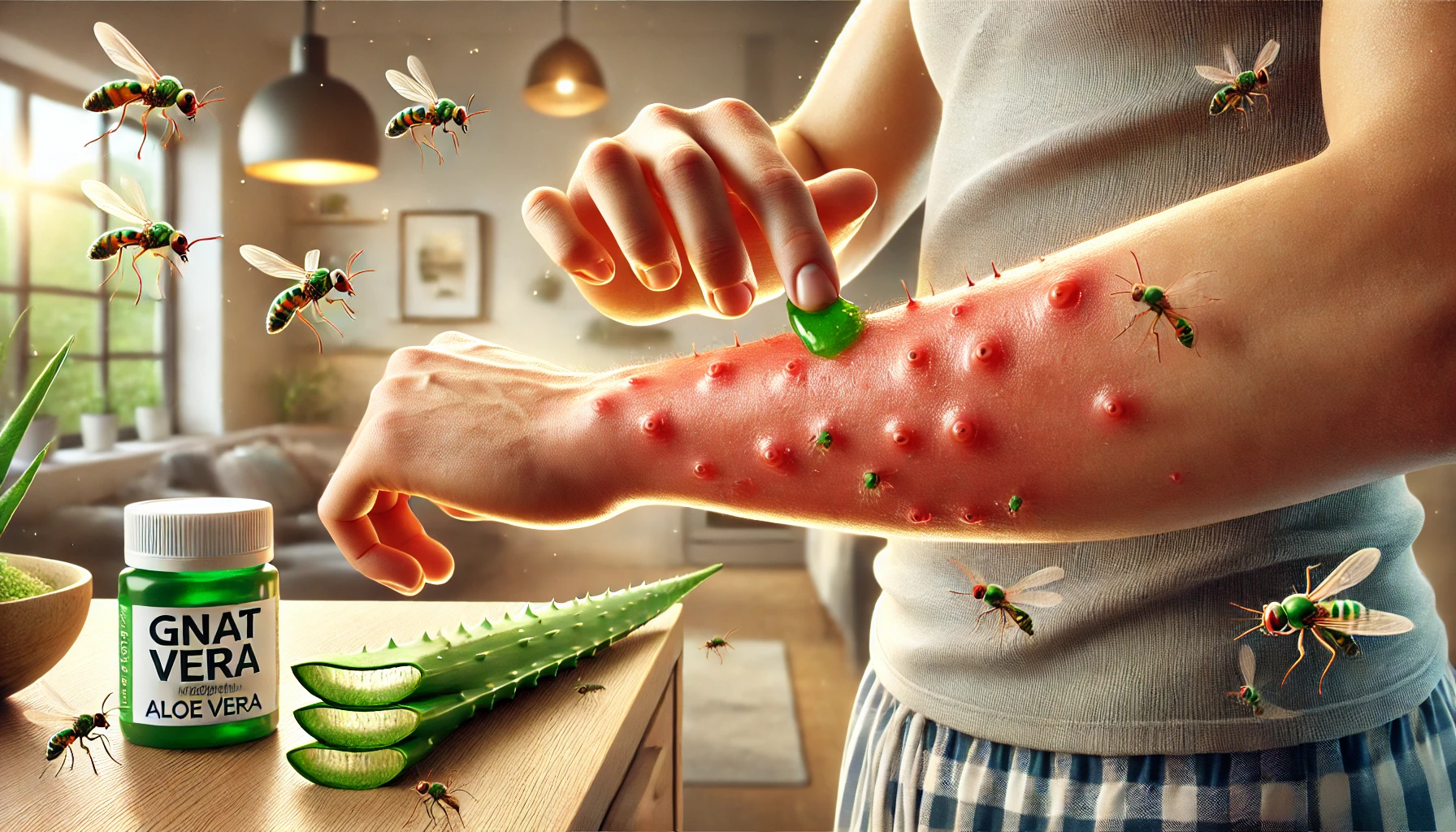Key Takeaways
- Gnats can trigger allergies through biting or airborne irritants.
- Symptoms range from mild localized reactions to severe anaphylaxis.
- Individuals with pre-existing allergies or weakened immune systems are more vulnerable.
- Immediate relief includes cold compresses, antihistamines, and topical treatments, while severe cases may require medical intervention.
- Prevention includes sanitation, controlling humidity, maintaining houseplants, using repellents, sealing entry points, and regular professional inspections.
 Gnats, are small tiny insects who are commonly found buzzing around homes, gardens, and damp areas, and are often dismissed as harmless nuisances. However, for some individuals, gnats can be more than just irritating—they can trigger allergic reactions. Understanding the relationship between gnats and allergies is essential for ensuring comfort and safety in your home.
Gnats, are small tiny insects who are commonly found buzzing around homes, gardens, and damp areas, and are often dismissed as harmless nuisances. However, for some individuals, gnats can be more than just irritating—they can trigger allergic reactions. Understanding the relationship between gnats and allergies is essential for ensuring comfort and safety in your home.
In the below comprehensive guide, we will learn how gnats can cause allergic reactions, symptoms to look out for, highly effective and effecient treatment methods, and preventive strategies to protect your family and maintain a healthy living environment.
Understanding Gnat Allergies: Why Do They Happen?
Gnats encompass various small flying insects, including fungus gnats, fruit flies, and biting midges (commonly called “no-see-ums”). While many gnats are harmless, biting species can trigger allergic reactions due to the saliva they inject when feeding on blood. This saliva contains proteins that stimulate the immune system, causing an allergic response.Additionally, even non-biting gnats can cause allergic reactions through inhalation of airborne particles, molds, bacteria, and insect debris, irritating sensitive respiratory tracts and skin.


Not getting a solution?
Get your free pest control estimate today!Types of Gnats Commonly Associated with Allergies
To know about allergic reactions effectively, first we need to identify which gnats you may encounter at home:1. Biting Midges (No-See-Ums) These nearly invisible gnats cause painful bites, primarily by females feeding on blood. Their saliva contains allergens and anticoagulants, often causing severe allergic responses, such as intense itching, redness, and pronounced swelling at the bite site. 2. Fungus Gnats They are frequently found around houseplants, and they thrive in damp, moisture conditions. As known they don’t bite, their presence can instigate allergic reactions due to airborne debris, particularly affecting those with asthma or already existing respiratory problems. 3. Fruit Flies Fruit flies assemble around decaying organic materials, like overripe fruits. While non-biting, they try to often spread molds and bacteria, cause to happen allergies and exacerbating respiratory symptoms or skin irritation, especially in allergy-sensitive individuals.

Identifying Symptoms of Gnat-Related Allergic Reactions
Recognizing allergic reactions caused by gnats is crucial to timely intervention and treatment:Mild Allergic Reactions
- Localized itching and redness around bites.
- Minor bumps or swelling confined to the bite area.
- Skin irritation or mild rash.
Moderate to Severe Allergic Reactions
- Extensive swelling extending beyond the bite area.
- Hives appearing elsewhere on the body.
- Respiratory difficulties, including wheezing, coughing, or shortness of breath.
- Swelling of the face, lips, or extremities.
- Dizziness, light-headedness, or nausea.
Severe, Life-Threatening Reactions
- Anaphylaxis, characterized by extreme difficulty breathing, rapid heart rate, severe swelling, dizziness, or loss of consciousness.
- Anaphylaxis requires immediate emergency medical treatment.
Factors Increasing Risk of Gnat Allergies
- Although anyone can react to gnats, some individuals are at higher risk:
- People with a history of allergies, asthma, or insect-bite sensitivity.
- Young children and elderly adults due to weaker immune responses.
- Individuals frequently exposed to gnat-heavy environments.
Effective Treatments for Gnat-Induced Allergies
Treating gnat allergies involves immediate symptom relief and, if necessary, professional medical intervention:Immediate Home Remedies
-
Cold Compresses: Ice packs wrapped in cloth help minimize swelling and reduce itching by numbing the affected area.
-
Antihistamines: Over-the-counter medications such as diphenhydramine (Benadryl) can relieve itching and swelling caused by allergic reactions.
-
Topical Solutions: Hydrocortisone cream or calamine lotion effectively reduces skin inflammation and irritation.
Medical Treatment Options
-
Prescription Antihistamines: For persistent or severe reactions, stronger prescription antihistamines may be required for relief.
-
Steroidal Treatments: Oral steroids or steroid injections can be necessary for severe swelling and systemic reactions.
-
Emergency Interventions: Anaphylaxis requires urgent medical care, including the administration of epinephrine and professional medical monitoring.

Detailed Strategies to Prevent Allergic Reactions from Gnats
Preventive measures are the cornerstone of reducing allergy risks associated with gnats:Indoor Preventive Measures
-
Eliminate Breeding Grounds: Regularly remove standing water, clean drains, and dispose of food waste punctually to prevent gnat infestations.
-
Manage Houseplants: Allow soil to dry thoroughly between watering, and consider using insecticidal soap or beneficial nematodes to eliminate larvae.
-
Install Protective Barriers: Use fine-mesh window screens to prevent gnats from entering your home.
Outdoor Preventive Practices
-
Use Insect Repellent: Apply EPA-approved repellents containing DEET, picaridin, or lemon eucalyptus oil to exposed skin when outdoors.
-
Protective Clothing: Wear long-sleeved shirts, pants, socks, and hats to minimize skin exposure and reduce the risk of bites.
-
Avoid Peak Gnat Activity: Gnats are most active at dawn and dusk; limit outdoor activities during these periods to reduce encounters.
Routine Home Maintenance
-
Seal Entry Points: Regularly inspect and seal cracks and gaps around doors, windows, and vents to prevent gnats from entering.
-
Humidity and Ventilation Control: Use exhaust fans, air conditioners, and dehumidifiers in moisture-prone areas like kitchens, bathrooms, and basements to maintain low humidity levels.
Ongoing Pest Monitoring and Control
-
Professional Pest Inspections: Regular inspections by a pest control company can help detect early signs of infestation and provide timely interventions.
-
Integrated Pest Management (IPM): A combination of sanitation, preventive measures, and high-quality treatments ensures effective long-term control of gnats.
If you feel things have gone out of control, it is advised to contact pest control professionals. Our team can provide a customized approach to protect your home effectively.
Visit our Species, Control, and DIY Guide sections for additional resources on gnats and ways to tackle a gnats infestation.





